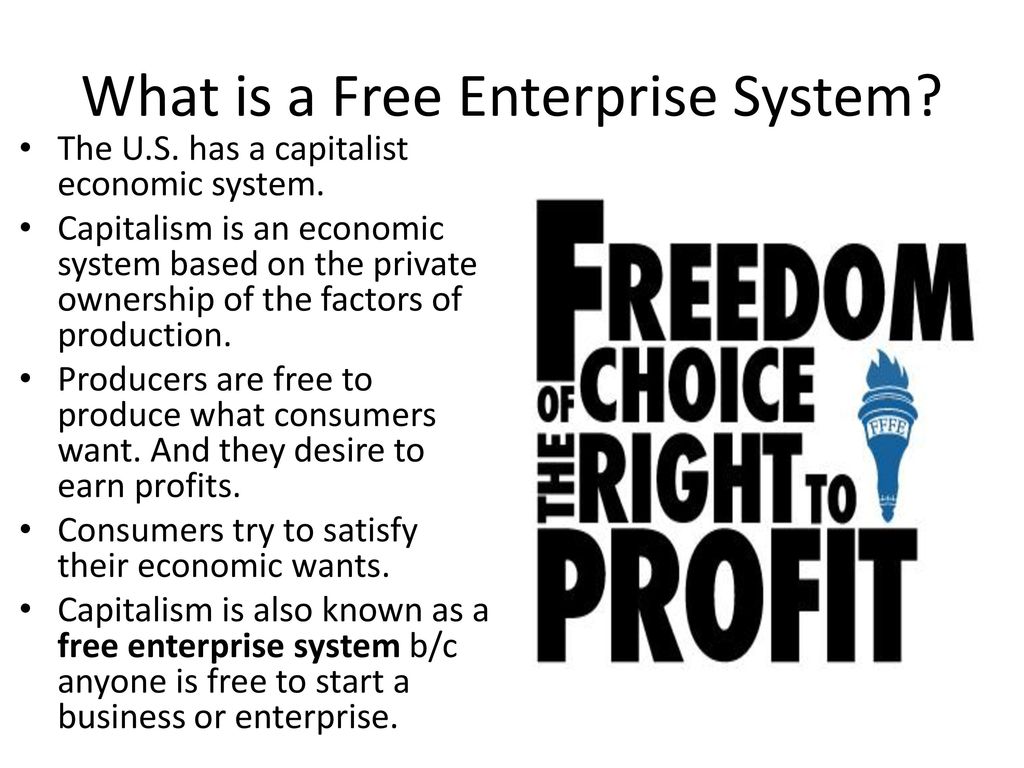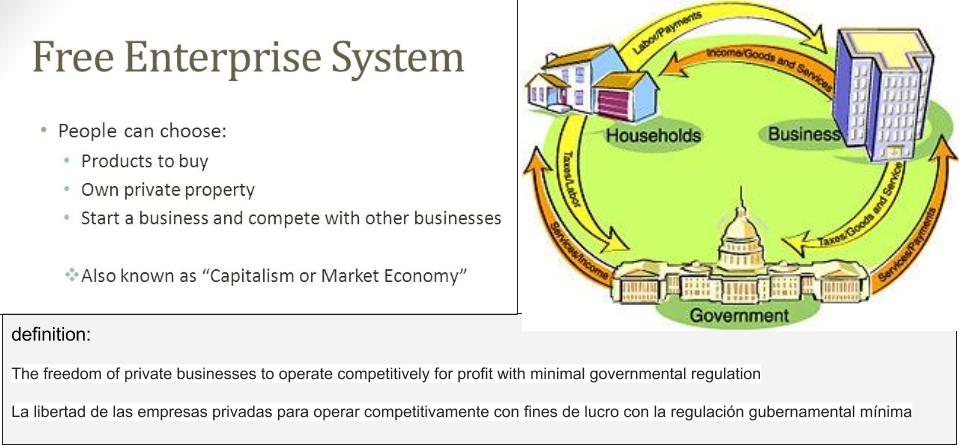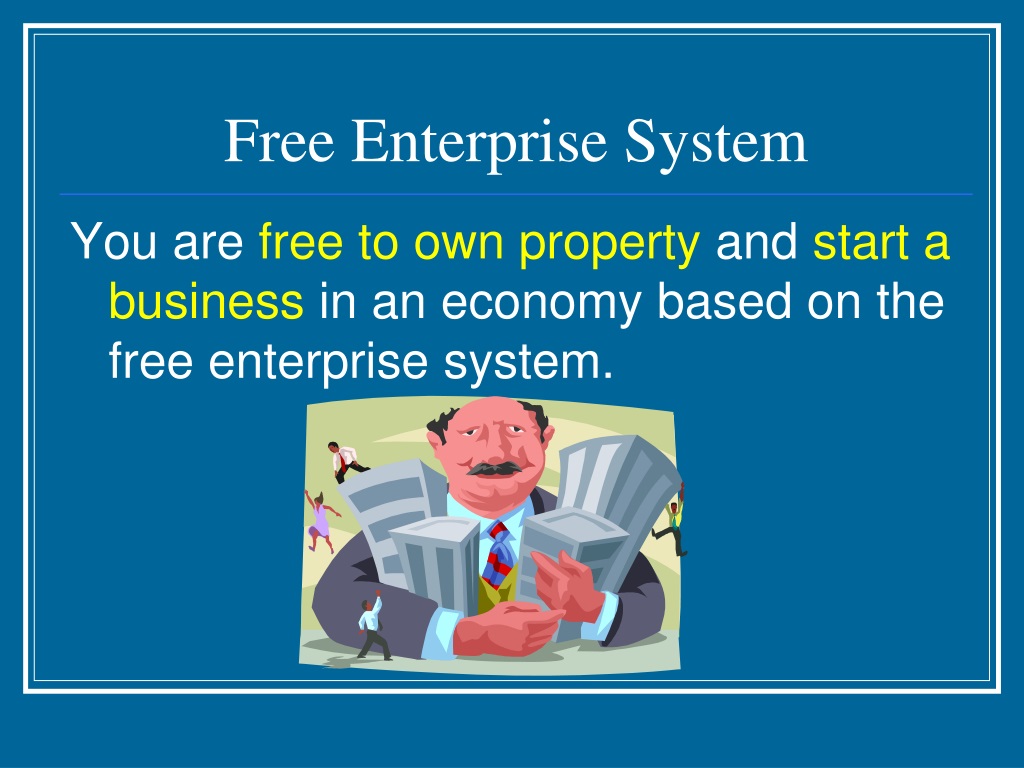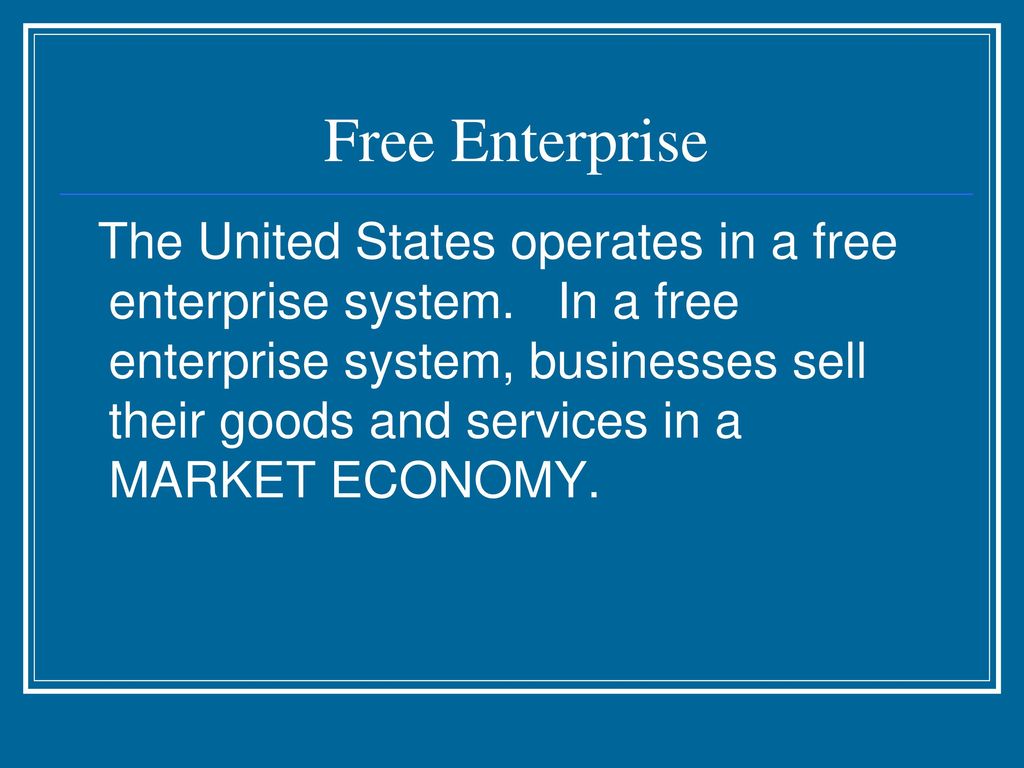The Major Features Of The U.s. Free Enterprise System Include

The U.S. free enterprise system, cornerstone of American prosperity, is under increasing scrutiny amid economic shifts and policy debates. Understanding its core features is now more crucial than ever for businesses and citizens alike.
This article breaks down the major components of the U.S. free enterprise system, outlining its fundamental principles and how they operate in the modern economy. It's essential knowledge for navigating today's economic landscape.
Key Pillars of the Free Enterprise System
The U.S. free enterprise system rests on several key pillars, each contributing to its dynamism and complexity. These include private property, economic freedom, voluntary exchange, profit motive, and competition.
Private Property: The Foundation
Private property rights are paramount. Individuals and businesses have the right to own, use, and dispose of land, buildings, equipment, and other resources as they see fit, within legal boundaries.
This ownership incentivizes investment and innovation. Secure property rights encourage individuals to take risks and develop new products and services, knowing they will reap the rewards of their efforts.
Economic Freedom: Choice is King
Economic freedom means individuals and businesses are free to make their own economic choices. This includes choosing what to produce, what to consume, where to work, and where to invest.
The Heritage Foundation's Index of Economic Freedom consistently ranks the U.S. high, though recent scores show a slight decline attributed to increased government spending and regulation. This freedom fosters entrepreneurship and drives economic growth.
Voluntary Exchange: Mutually Beneficial Transactions
Voluntary exchange occurs when individuals and businesses willingly engage in transactions that benefit both parties. Buyers and sellers agree on prices and terms, creating a win-win scenario.
This principle underpins the market economy. Transactions happen because both parties perceive that they are better off as a result, leading to an efficient allocation of resources.
Profit Motive: The Engine of Innovation
The profit motive drives individuals and businesses to seek financial gain. It is the incentive that encourages them to produce goods and services that consumers want and need.
While often criticized, the profit motive is a powerful force for innovation and efficiency. Businesses constantly seek ways to reduce costs, improve products, and attract customers, ultimately benefiting society.
Competition: The Consumer's Best Friend
Competition among businesses ensures that consumers have choices. Businesses must strive to offer better products, lower prices, and superior service to attract customers.
Antitrust laws, enforced by the Federal Trade Commission (FTC) and the Department of Justice (DOJ), are designed to prevent monopolies and promote competition. This keeps prices down and encourages innovation.
Government's Role: A Balancing Act
The government plays a crucial role in the U.S. free enterprise system. It establishes and enforces property rights, provides a stable legal framework, and regulates certain industries to protect consumers and the environment.
However, the appropriate level of government intervention is a subject of ongoing debate. Some argue for minimal government involvement to maximize economic freedom, while others advocate for more regulation to address market failures and promote social equity.
According to the Congressional Budget Office (CBO), government spending as a percentage of GDP has fluctuated significantly over time, reflecting changing priorities and economic conditions. This underscores the ongoing tension between government intervention and economic freedom.
Challenges and Future of the System
The U.S. free enterprise system faces numerous challenges in the 21st century. These include increasing income inequality, technological disruption, and global competition.
Addressing these challenges requires careful consideration of policy options. Some propose strengthening social safety nets, investing in education and job training, and promoting fair trade practices.
The future of the U.S. free enterprise system depends on its ability to adapt to changing circumstances. Policymakers, businesses, and citizens must work together to ensure that the system remains vibrant and equitable for generations to come.
Ongoing debates surrounding antitrust enforcement, tax policy, and labor regulations will significantly impact the future trajectory of the U.S. free enterprise system. Monitoring these developments is critical for understanding the evolving economic landscape.
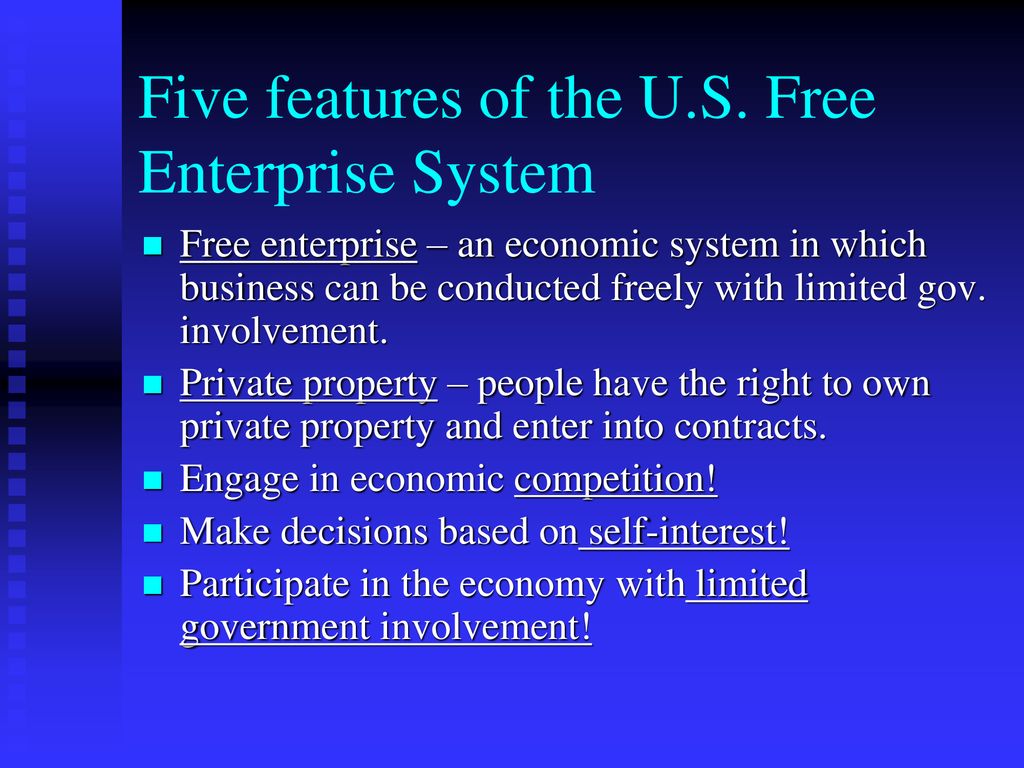
-1.png?width=1800&height=1050&name=COMPANY LOGO (37)-1.png)




